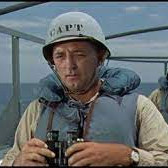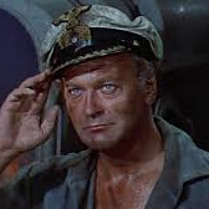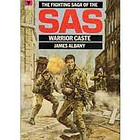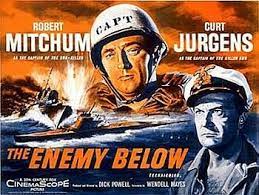Look what I should have written
This next part of the thesis deals with the 1957 film, The Enemy Below. Two members of the cast of The Enemy Below, Robert Mitchum and Kurt Jurgens would also appear later in the thesis, in The Longest Day.
and Kurt Jurgens would also appear later in the thesis, in The Longest Day.
The film could easily do with more of a synopsis here as the original one is somewhat thin on the ground. This is another film that received a short analysis, I guess to free up more analysis of the later films.
In a newer analysis, a more in-depth consideration of the psychological effects of war would be undertaken. Added to this would highlight the theory that any history written is directly affected by the person writing it and the time it was written.  In this case, there has been great significance paid to PTSD in the last two decades.
In this case, there has been great significance paid to PTSD in the last two decades.
Finally, the new analysis would include a discussion of the fact that von Stolberg is not an ardent Nazi. Ultimately, through the ensuing action, both commanders grow to respect each other. At the time of writing, this film was placed in the Anomalies section because, as you will read, it deals with a theme that is characteristic of the later films considered in the thesis.
The film is based on the book of the same name by Denis Rayner but has several changes to both the characters and the action. The major change is that the destroyer is an American shop rather than a British one. It is based on the authors’ experiences of the Battle of the Atlantic. In the film, the American ship is hunting the German U-boat.
The Enemy Below 1957
The next film, The Enemy Below from 1957 goes much further than The Desert Fox which makes it more like the latter films considered here. This film follows the story of two naval crews, one German, in a U Boat, and the other American, in a destroyer escort. The film concentrates on both crews simultaneously and both are equally important to the story.
The American crew’s mission is to destroy U-Boats while the crew of the U-Boat are attempting to meet another German ship, Raider M, so they can pick up a captured code book and return it to Germany.
German characters in previous films were generally dutiful officers, many indelibly tainted with Nazism, but this is not the case here. Von Stolberg (Curt Jurgens), the U-boat captain, makes his disillusionment clear when he tells his second officer:
“In forty-eight hours, we rendezvous with Raider M. We take the captured British code book, and we go home with it. And this is the important thing, not the code book, but when we have it, we go home.”
In this way, he voices a similar opinion to Captain Miller in Saving Private Ryan. The mission that he must undertake is his means to achieve his personal mission, the end of which is his return home and survival.
The growing respect
The German crew are experienced veterans. Lieutenant Commander Murrell (Robert Mitchum) commands the American ship and is also hardened to combat after seeing his wife killed on his merchant ship when it was torpedoed. The rest of the crew are initially naïve and as a result, are arrogantly confident in their ability to sink the German U-Boat.
Another similarity that this film holds with Saving Private Ryan is that Murrell and most of his crew were civilians prior to the war; a fact alluded to several times when the ship’s doctor and Murrell reminisce on their previous lives.
The film is bleak, after losing his wife in such a terrible way, Murrell sees the hopelessness of humanity, a fact he reveals in one of his conversations with the doctor:
“We’ve learnt a hard truth,” Muller says.
“How do you mean?” replies the doctor.
“There’s no end to the misery and destruction. You cut the head off a snake, and it grows another one, you cut that one off and you find another one. You cut that one off and you find another one. You can’t kill it because it’s something within ourselves. You can call it the enemy if you want but it’s part of us, we’re all men.”
Cut from the same cloth
The perspectives of both captains are similarly bleak on the war and life in general. Though Murrell says he does not, “want to know the captain [he is] trying to destroy.” It becomes clearer, as the film progresses, that they are kindred spirits. Both captains gradually come to respect each other to the extent that Murrell risks his life to save the life of his worthy adversary. This scene symbolizes the message of the film, that both sides should really help each other rather than attempt to destroy each other.
The Enemy Below therefore adopts an anti-war stance in a period when the majority, if not all Second World War films promoted a pro-war stance that glorified the pursuit of war. It is these themes depicted here, as uncharacteristic of the earlier period, that will dominate the later period of films considered here.
What’s next?
Whilst sorting out some storage boxes of books. Loads of books were discovered that could be included on worldwariiwaffle.com. Two grabbed my attention. The first is part one of a series of books: The Fighting Saga of the SAS – Warrior Caste by James Albany.  I have now reread it after last reading it thirty years ago and the review will be coming soon.
I have now reread it after last reading it thirty years ago and the review will be coming soon.
The second book in the series was available on eBay and is close to completion now too. The latter is Special Unit by A H. Brown, published in 1959. Arthur Brown served during the war, including witnessing the Belsen Concentration camp and went on to write several adventure-style books afterwards. Again, I last read this book decades ago and I am looking forward to rereading it, this is now completed with a review will follow soon.
A reminder to those returning readers and to explain to those new ones. The idea behind this site is to foster communication and discussion about anything Second World War-related. This is to further debates and to encourage people to delve deeper into the war through reading books.
Thank you for reading this post, all comments are greatly received. The next film post will be an analysis of where it all started for me, A Bridge Too Far.
All the best
BigT
